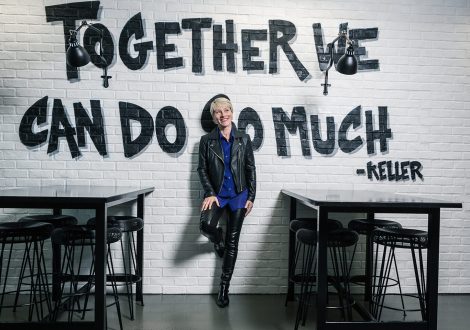Like a picture frame makes an image stand out for the viewer, framing a message makes communication stand out for the receiver.
Whether pitching for work, writing a blog or delivering a keynote presentation, your message will have more impact if it is framed in a way that makes it more acceptable to the audience.
In his book ‘All marketers tell stories’1, Seth Godin says marketing is most effective ‘when you talk to a group that shares a worldview and also talks about it’. I agree. The secret sauce of a successful marketing program or public relations campaign is a message that your audience is receptive to because it matches their worldview. So much so, that they feel compelled to share and/or act on it.
Marketers and public relations practitioners are acutely aware of how challenging it can be to try and change people’s attitudes and behaviours. This is because when confronted with a new idea, a person will interpret it through the filters of their values and beliefs, and in the context of their experiences.
The aim, therefore, is to create a frame for a message / story that best taps into a target market’s general worldview about a topic, issue, debate or decision, so it resonates more deeply with them.
If, for example, you are required to sell a new brand of potato chips and discover that many potential consumers hold a worldview that ‘Potato chips are unhealthy and make you put on weight’, framing the story in a way that matches their worldview could yield more positive results. For example: ‘Our new potato chips are made from organic potatoes, are low in fat and lightly salted. You’ll only find them in the health food section of the supermarket’.
The following are some useful frames to consider when developing a key message for your next news release, marketing campaign, project, launch, coaching conversation or any other communication:
Values/beliefs frame – frame an idea by attaching it to a pre-existing value or belief.
Purpose frame – frame an idea in the context of ‘why’, for example, by drawing a connection between an action and a result or achieving a particular outcome.
‘What if’ frame – frame an idea in the context of the future, for example, ‘Imagine what could happen if you took this action?’.
Middling frame – frame an idea in the context of a spectrum of choices, with the middle choice being the desired, plausible option.
While tapping into the right worldview of your target audience is essential for effective communication, attaching a frame to your message will increase its stickability.
1Godin, S. All Marketers Tell Stories, Portfolio/Penguin, 2009.
©Ros Weadman 2022 Ros Weadman helps people and organisations to build a strong positive brand, increase market visibility and enhance their reputation. Ros’s new book ‘Enhance Your Reputation’ is out now. Order your copy here.
To receive this enews straight to your inbox, subscribe here. You can connect with Ros via email [email protected] or by phone 1800 677 600.



